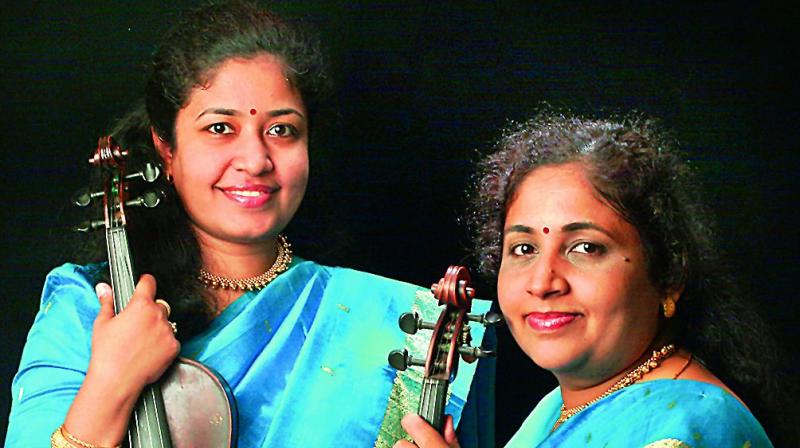Bringing the violin to life

Dr M. Lalitha and M. Nandini, aka the LN sisters, are the only violinist sisters to perform Indian classical, world, fusion and Western classical music in all of Asia. With several awards, accolades and titles to their credit, the duo is all set to enthrall audiences in the city on Monday. The violin duet concert for the South Indian Cultural Association (SICA), Hyderabad is being organised as a part of their International Women’s Day celebrations at Ravindra Bharati.
Elaborating on the event, the ‘queens of violin’, originally from Chennai, share: “The concert will be a typical Carnatic music concert accompanied by music from the mridangam and the ghatam. The audience in Hyderabad have a genuine interest in classical music. So every time we come to the city, we make it a point to perform some different type of classical music.”
Hailing from an illustrious family of musicians, Lalitha and Nandini are privileged to be the fourth generation of musicians in their family and have undergone the traditional guru-shishya para -mpara. The talented pair, apart from performing violin duets, have also collaborated with musicians working on varied genres of music — Ustad Shahid Parvez, George Brooks, Miguel Chachowski, Carl Rathus, Fazal Qureshi and Pirpauke (a Finnish band) to name a few.
Starting at the tender age of three, their over two-decades-long careers have seen the sisters display immaculate technique, all thanks to their training. “We got in-house training from our grandfather, violinist Lakshminarayana Iyer and mother Subbulakshmi. This helped us learn the finer and subtle aspects of music and gave us the opportunity to be with our gurus 24-7. Nowadays, the whole concept of staying with gurus doesn’t exist. But technology has made the distance minimal for people who are serious about learning,” feels Dr Lalitha.
But has the concept of learning music or instruments changed drastically then? “Not exactly,” quips Nandini, adding: “We give lessons through Skype to students. What is encouraging now is that youngsters are taking the risk of sacrificing their white-collar jobs if they find even a small footing in the creative field. Earlier, people used to balance both, but now people are more than willing to take a risk for their creative pursuits.”

